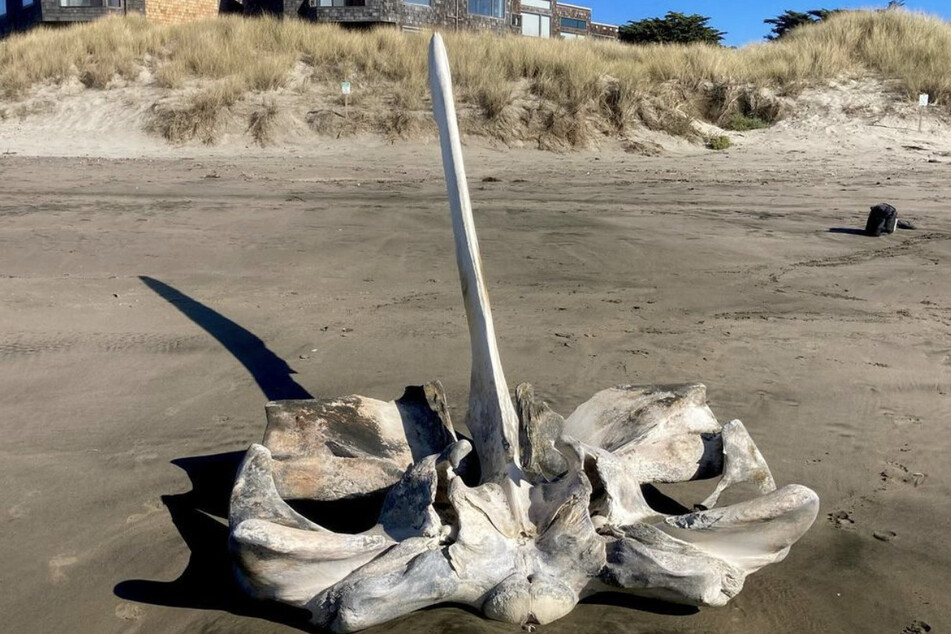Skull of marine "behemoth" washes up on California coast
Watsonville, California - The base of a skull belonging to a marine "behemoth" washed ashore along Pajaro Dunes State Beach in Watsonville, prompting curious locals to take photos and share them with experts for identification, Santa Cruz Museum of Natural History representatives told SFGATE over the phone.

Though it's unclear when exactly the skull base landed on the beach, the museum posted photos of it to social media on Febtuary 4.
Felicia Van Stolk, the museum's executive director, said that experts believe it might be the basicranium of either a fin whale or blue whale – two endangered marine species that are among the largest on earth, according to the National Oceanic and Atmospheric Administration (NOAA).
"They're both gigantic whales," Robert Boessenecker, chief paleontologist at the Charleston Center for Paleontology in South Carolina, told SFGATE over the phone.
"I mean, they've got skulls that are measured in meters rather than feet or centimeters. And they're quite similar."
Though this occurrence isn't necessarily rare, it's not exactly common, either, Boessenecker said. In the past, whale remains have washed up at Fort Funston and Ocean Beach in San Francisco, captivating local photographers, and in 2022, low tides revealed a trove of fossils in the Santa Cruz area.
Fin and blue whales heavily impacted by hunting and climate change
Like all whale species, fin whales were aggressively hunted by commercial whalers in the 20th century, NOAA's website says. By the mid-1900s, more than 700,000 of them were killed.
Though the practice was outlawed by the 1980s with few exceptions, ship strikes, climate change, and entanglement continue to pose an existential threat to the population today.
Similarly, though the blue whale population is rebounding, it's still just a fraction of what it once was before commercial whalers invaded the ocean with exploding harpoons and steam-powered ships.
Van Stolk told SFGATE that the museum will not be taking the basicranium, meaning that locals still have a unique opportunity to try to "make sense" of the recent discovery.
"This type of nature event is a great opportunity to get people excited about nature," Van Stolk told SFGATE via email. "It is a wonderful reminder that the Monterey Bay National Marine Sanctuary is the home to some truly amazing creatures."
Cover photo: Screenshot/Instagram/whyvonnegiraffe
